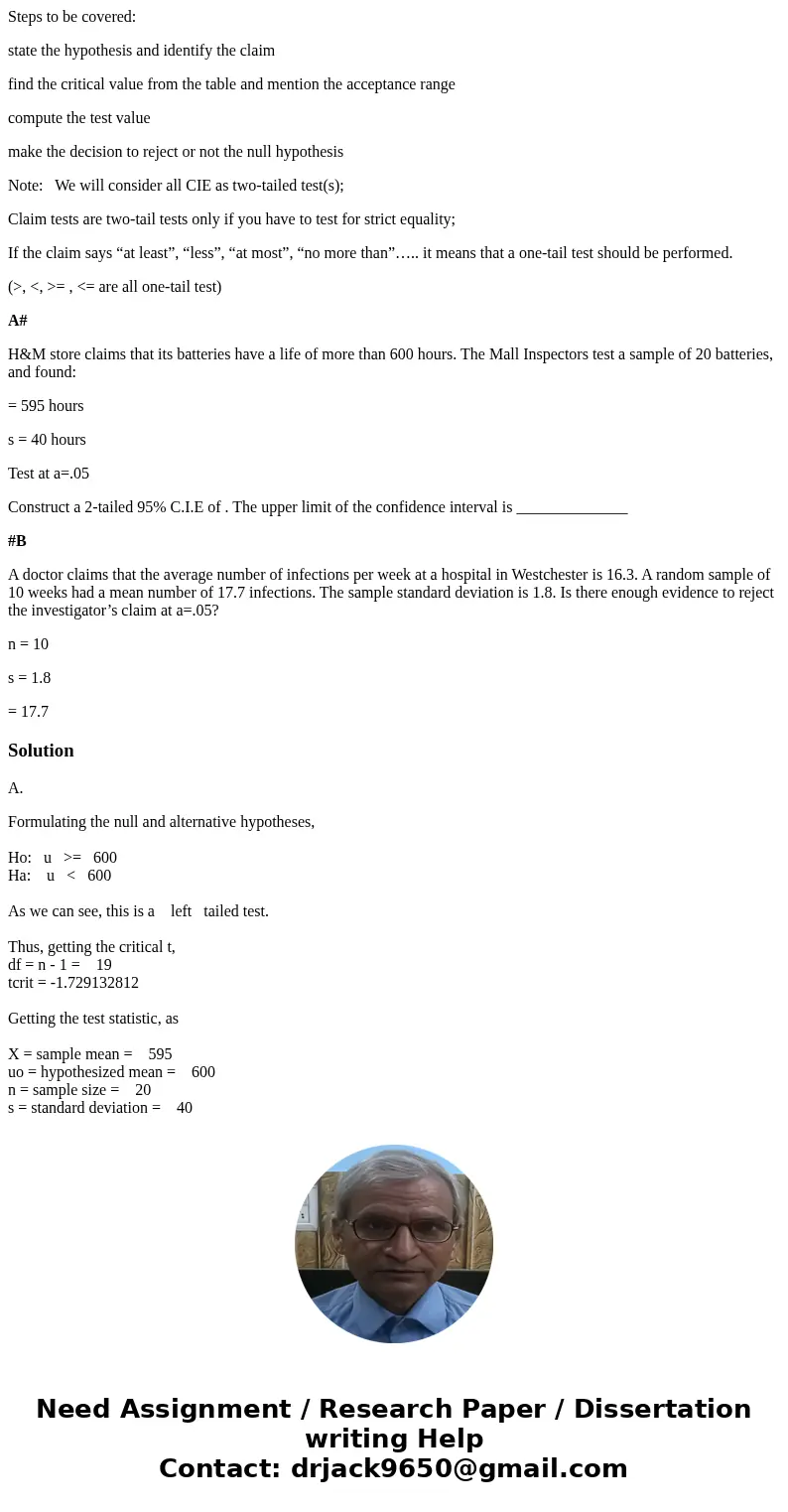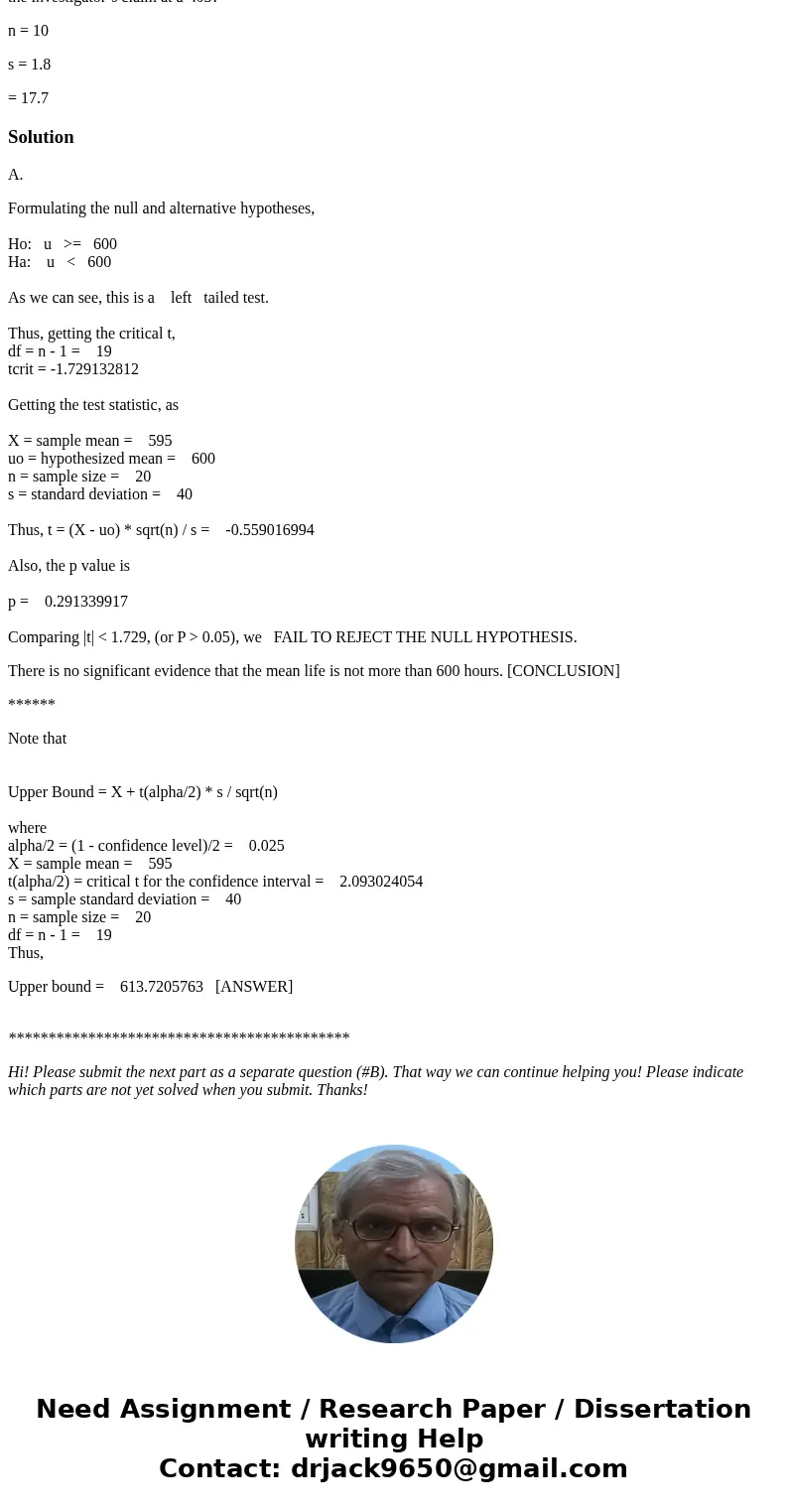Steps to be covered state the hypothesis and identify the cl
Steps to be covered:
state the hypothesis and identify the claim
find the critical value from the table and mention the acceptance range
compute the test value
make the decision to reject or not the null hypothesis
Note: We will consider all CIE as two-tailed test(s);
Claim tests are two-tail tests only if you have to test for strict equality;
If the claim says “at least”, “less”, “at most”, “no more than”….. it means that a one-tail test should be performed.
(>, <, >= , <= are all one-tail test)
A#
H&M store claims that its batteries have a life of more than 600 hours. The Mall Inspectors test a sample of 20 batteries, and found:
= 595 hours
s = 40 hours
Test at a=.05
Construct a 2-tailed 95% C.I.E of . The upper limit of the confidence interval is ______________
#B
A doctor claims that the average number of infections per week at a hospital in Westchester is 16.3. A random sample of 10 weeks had a mean number of 17.7 infections. The sample standard deviation is 1.8. Is there enough evidence to reject the investigator’s claim at a=.05?
n = 10
s = 1.8
= 17.7
Solution
A.
Formulating the null and alternative hypotheses,
Ho: u >= 600
Ha: u < 600
As we can see, this is a left tailed test.
Thus, getting the critical t,
df = n - 1 = 19
tcrit = -1.729132812
Getting the test statistic, as
X = sample mean = 595
uo = hypothesized mean = 600
n = sample size = 20
s = standard deviation = 40
Thus, t = (X - uo) * sqrt(n) / s = -0.559016994
Also, the p value is
p = 0.291339917
Comparing |t| < 1.729, (or P > 0.05), we FAIL TO REJECT THE NULL HYPOTHESIS.
There is no significant evidence that the mean life is not more than 600 hours. [CONCLUSION]
******
Note that
Upper Bound = X + t(alpha/2) * s / sqrt(n)
where
alpha/2 = (1 - confidence level)/2 = 0.025
X = sample mean = 595
t(alpha/2) = critical t for the confidence interval = 2.093024054
s = sample standard deviation = 40
n = sample size = 20
df = n - 1 = 19
Thus,
Upper bound = 613.7205763 [ANSWER]
*******************************************
Hi! Please submit the next part as a separate question (#B). That way we can continue helping you! Please indicate which parts are not yet solved when you submit. Thanks!


 Homework Sourse
Homework Sourse